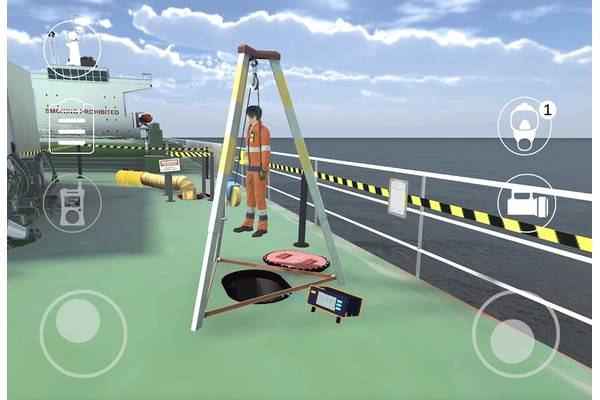
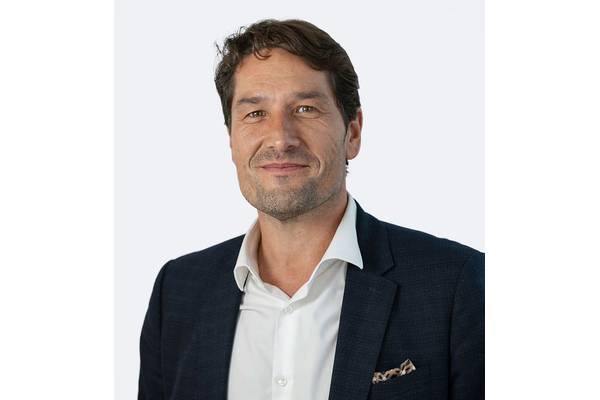
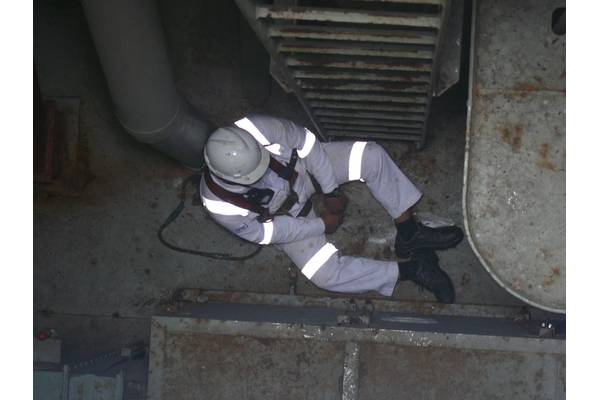

It's nearly 45 years since the tragedy on the ANCO Duke where seven crew died at the bottom of the tank they were cleaning. “I was working on chemical tankers then. All the crew felt this terrible loss of life and took on tank entries with a heightened safety focus,” says Captain Dave Watkins, Deputy Director of the confidential near-miss reporting service CHIRP Maritime. Since then, enclosed space deaths still occur, although not in the number they did.
Watkins has years of experience on chemical and VLCC tankers as an officer and master, and has undertaken hundreds of enclosed space entries on tankers, bulk and general cargo ships. “I was the first in, and I'd be the last out.” There was no compromise on his enclosed space entry protocol.
Reflecting on his tanker experience, he says: “You’re at the bottom of a 100-step ladder. It can feel claustrophobic and fearful when inside 30,000 cubic meters of a VLCC, ballast tank, or forepeak tank. What reassures you is your trained crew working as a unit with everyone looking out for each other.”
Before filling in the enclosed space entry permits and the risk assessment form, Watkins would go into the tank with his breathing apparatus, backup supply, personal O2 meter and multi-gas detector, torch and spare torch. The tanks had been forced-ventilated for days until final testing took place. “Only when we had tested the space remotely, the tank valves isolated with the crew observing, would I proceed with testing the tank locally, including inspecting the tanks for safe physical access.”
The crew needed to see leadership in action and procedures followed to the letter. No shortcuts. Discipline continued in the tank. If anyone’s alarm was triggered, work stopped, and the tank was tested and reventilated before the entry process was restarted.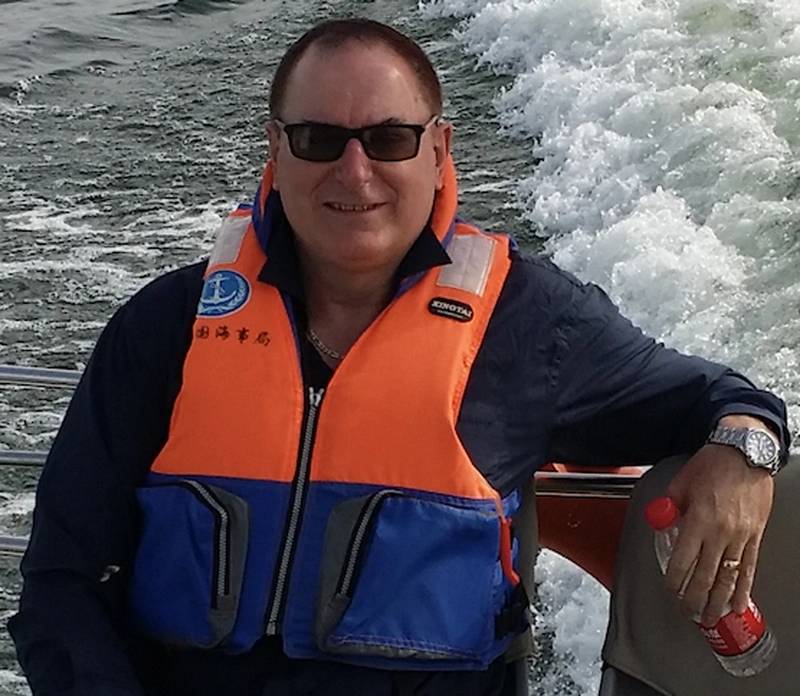 “You’re at the bottom of a 100-step ladder. It can feel claustrophobic and fearful when inside 30,000 cubic meters of a VLCC, ballast tank, or forepeak tank. What reassures you is your trained crew working as a unit with everyone looking out for each other.”
“You’re at the bottom of a 100-step ladder. It can feel claustrophobic and fearful when inside 30,000 cubic meters of a VLCC, ballast tank, or forepeak tank. What reassures you is your trained crew working as a unit with everyone looking out for each other.”
Captain Dave Watkins, Deputy Director, CHIRP Maritime.
Enclosed space tank work demands high alertness and stamina, so the crew should be adequately rested and fit. Tank work must never be rushed, and there should be no pressure and no overconfidence. These are the human factors that lead people to take shortcuts. “When tank inspections are carried out, your sole focus is just this job, nothing else. No conflicting work activities are taking place; the sole focus should be on the men and women working in the tank.”
Equally important for reassuring the crew is the support provided by the deck team in case of emergencies. “You need an experienced spotter with good communication skills who can quickly activate an emergency response if something goes wrong. Regular exercises were practiced until we became confident in our ability to carry out a rescue from any enclosed space.”
Responding to a casualty in an enclosed space requires specific knowledge, training, and equipment, including the use of gas detectors, respirators, and safety harnesses. Enclosed space entry drills provide an opportunity to further enhance competence, and Captain Sundeep R Sequeira, Area Sales Director for training provider OneLearn Global, highlights the importance of responding not reacting.
“If a seafarer reacts impulsively and endangers themselves or others, it could create fear and mistrust among the crew. On the other hand, a well-planned and executed response can inspire confidence, trust among the crew, and reinforce the importance of safety protocols.”
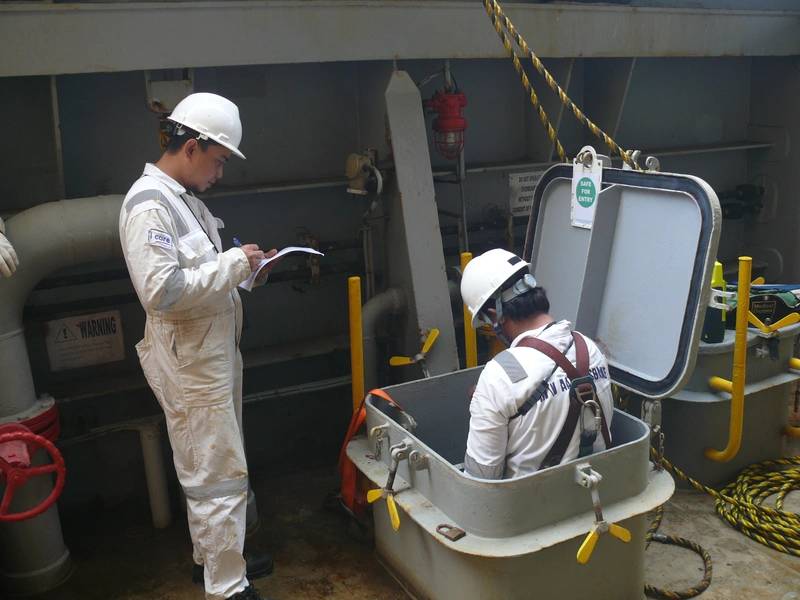 Enclosed space entry drills provide an opportunity to enhance competence.
Enclosed space entry drills provide an opportunity to enhance competence.
Image courtesy of OneLearn Global
Of equal importance, is a high level of familiarity with the procedures for notifying the emergency response team and following established communication protocols, says Sequeira.
It is important to look at enclosed space issues through the dimension of human behavior, says Raal Harris, Chief Creative Officer at Ocean Technologies Group. “As human beings we have a blind spot for dangers that we cannot see, touch or hear. This is particularly true if we see a space that we have entered without consequence many times in the past.” He says it is instinctive to go to the aid of another when no visible danger is present.
Exploring case studies, play-through scenarios and gaming techniques can all be effective in testing the application of knowledge, he says. Can the person make the right decision at the crucial moment? Can they do it under pressure? “Immersive techniques can help to simulate the conditions that people may face and prepare them.”
It’s a multi-dimensional issue, and training is not able to influence all the factors, he says. “There are many procedural, hardware and ship design factors which are beyond the seafarer’s control, and we support initiatives such as those by InterManager to attempt to address these so that we minimize risks wherever possible.”  “We are keen to ensure the debate looks beyond any initial mistakes made by those who died.”
“We are keen to ensure the debate looks beyond any initial mistakes made by those who died.”
Captain Kuba Szymanski, Secretary General, Intermanager
InterManager data shows that 347 people lost their lives between 1999 and 2023. The problem may be even greater as there is a lack of consistent recording and reporting within the industry, particularly by Flag States.InterManager’s research also shows that widely used IMO Resolution A1050/27 and Code of Safe Working Practices are very confusing, says Intermanager Secretary General, Captain Kuba Szymanski. These two documents are, however, the backbone for almost all company-prepared onboard safety management systems.
Late last year, the IMO committed to review guidance governing safe working in enclosed spaces, and plans are expected to be confirmed at MSC107 in June 2023.
InterManager has partnered on a submission that draws attention to industry-led investigations into enclosed space accidents. This has resulted in several distinct themes that require attention: design and construction, gas evolution, movement and entrapment within the ship structure, and the human element prevalent in many enclosed space incidents, such as the rush to rescue a single casualty resulting in the death of many, the disregard of procedures and local adaptation of unsafe practices.
Szymanski says: “We are keen to ensure the debate looks beyond any initial mistakes made by those who died.”
He would like to see table top exercises for office staff to familiarize them with how to cope in the event of an accident. Everyone involved in the command chain needs to have a better understanding of the dangers of working in enclosed spaces and the procedures needed to ensure safe working. “And I do mean everyone.”



